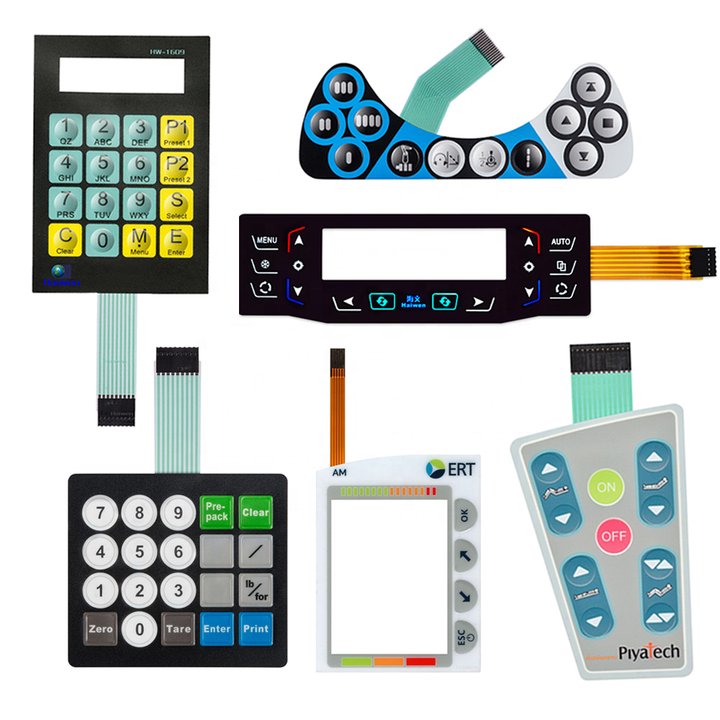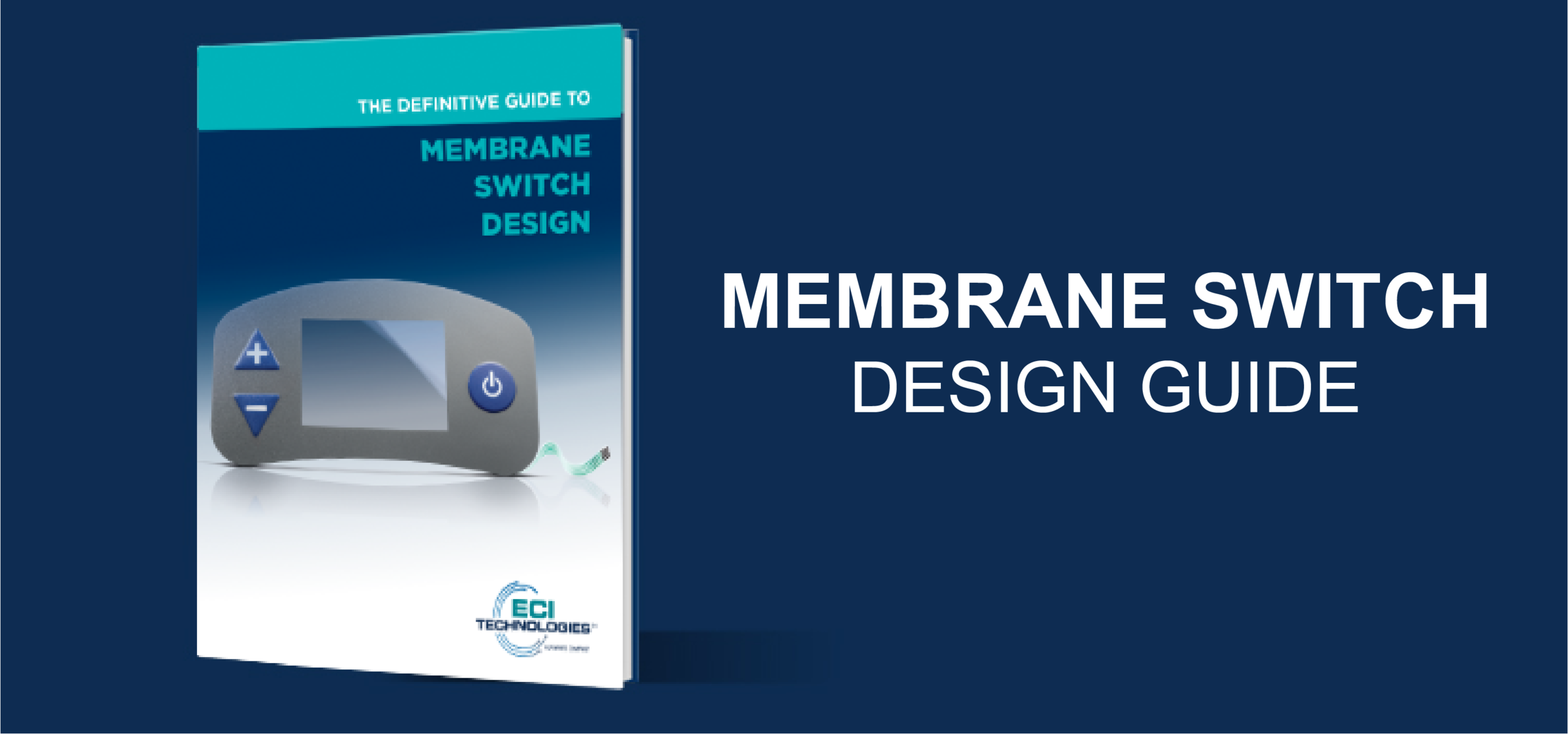A Comprehensive Guide to Membrane Switches for Product Designers
A Comprehensive Guide to Membrane Switches for Product Designers
Blog Article
Comprehending the Value of Membrane Switches in Customer Interfaces
Membrane buttons are important elements in the design of efficient customer interfaces, assisting in not only capability however also improving aesthetic charm and user communication. Their unique attributes, such as resistance to personalized designs and ecological factors, make them appropriate for a varied range of applications throughout multiple sectors. As we explore the future patterns and various advantages connected with Membrane innovation, it comes to be clear that these switches are greater than just elements; they stand for a merging of development and functionality. The effects of this technology on individual experience are worth analyzing better.
What Are Membrane Buttons?

The spacer layer, which consists of sticky homes, allows for the separation of the circuit layer from the overlay, making certain that the button stays in a non-activated state up until pressed. When stress is put on the overlay, it compresses the spacer layer, linking the space and completing the circuit in the underlying layer. This design not just reduces the physical area required for traditional mechanical buttons however also boosts the sturdiness of the device, as Membrane switches are generally immune to dust, moisture, and various other environmental elements.
Commonly located in applications ranging from consumer electronic devices to medical tools, Membrane buttons are essential to modern innovation, providing a straightforward and effective user interface that lines up with modern design needs.
Advantages of Membrane Switches
While many button innovations exist, Membrane Switches offer distinctive advantages that make them especially preferable in various applications. Among the primary benefits of Membrane buttons is their compact style, which permits for space-saving applications in tools where realty is limited. Their slim profile not only improves visual appeal however additionally facilitates lightweight building and construction.
Another significant advantage is their resistance to ecological factors. Membrane switches are normally secured against moisture, dust, and pollutants, making them excellent for use popular atmospheres, such as clinical tools and commercial equipment. This sturdiness prolongs the life-span of the button, reducing maintenance costs and enhancing dependability.
Additionally, Membrane buttons can be tailored to fulfill details layout requirements, incorporating distinct graphics and colors that enhance user communication. Their responsive comments choices can likewise be customized to supply a gratifying individual experience. Furthermore, Membrane switches are affordable, especially in high-volume applications, as they can be produced efficiently.
Applications in Various Industries

In the customer electronics field, Membrane buttons prevail in devices such as microwaves, cleaning devices, and remote controls. Their responsive feedback and visual options boost user experience while giving a smooth, modern appearance. Additionally, vehicle manufacturers use Membrane switches in control panel controls and infomercial systems, where space is restricted, and customer engagement is critical.
Furthermore, the commercial industry leverages Membrane buttons in control panels for machinery and equipment, permitting for user-friendly procedure in typically harsh settings. Their resistance to chemicals and wetness ensures long life and reliability in these applications. On the whole, the versatility of Membrane Switches adds considerably to their widespread use, making them essential in various technical domains.
Design Factors To Consider for Membrane Switches

When making Membrane switches, a number of key considerations need to be considered to guarantee optimum functionality and individual experience. To start with, the choice of products is vital; picking long lasting, premium substrates can boost the switch's durability and resistance to ecological variables such as moisture and temperature level fluctuations.
Second of all, the layout of the visuals overlay must focus on clearness and ease of use. Icons and text must be understandable, and the layout ought to help with user-friendly interaction (membrane switches). Furthermore, tactile responses is crucial; integrating official source a tactile dome or various other devices can enhance the customer experience by offering physical confirmation of activation
One more important element is the button's electric performance. Designers must ensure that the conductive traces are properly developed to lessen resistance and prevent signal interference. This entails assessing the needed actuation force and ensuring compatibility with the digital parts they will certainly user interface with.

Future Fads in Membrane Modern Technology
As innovation proceeds to advancement, Membrane switches are positioned to progress considerably, driven by developments in products and producing techniques. One arising trend is the consolidation of advanced products, such as conductive inks and adaptable substratums, which boost toughness and lower the total weight of Membrane switches. These products not only improve the responsive response but additionally permit the style of buttons that can withstand harsher ecological conditions.
Moreover, the assimilation of touch-sensitive modern technologies is changing conventional Membrane Switches into more interactive user interfaces. Capacitive touch sensing units embedded within Membrane switch panels can provide an extra responsive and instinctive individual experience, lining up with the expanding need for smooth, modern-day designs in customer electronics.
Additionally, innovations in printing methods, such as electronic and 3D printing, make it possible for fast prototyping and customization of Membrane buttons. This versatility permits manufacturers to react much more quickly to market demands and consumer choices.
Finally, sustainability is coming to be a considerable focus, with makers exploring environment-friendly products and processes. As these trends unravel, the future of Membrane technology assures enhanced performance, visual appeal, and ecological responsibility, strengthening their duty in sophisticated user interfaces across different industries.
Conclusion
Finally, Membrane Switches represent an essential element in the layout of customer interfaces, integrating capability with aesthetic adaptability. Their benefits, consisting of toughness and resistance to ecological aspects, make them appropriate for diverse applications across different sectors. Thoughtful design considerations boost user interaction and experience. As advancements in modern technology continue, the advancement of Membrane switches is expected to more improve customer interfaces, driving technology and boosting use in a progressively complex technical landscape.
Membrane buttons are integral elements in the design of effective user interfaces, helping with not just functionality however likewise boosting aesthetic charm and individual interaction.Membrane Switches offer as an important component in numerous customer interfaces, promoting a seamless interaction between customers and electronic gadgets.While countless switch innovations exist, Membrane Switches offer distinct advantages that Clicking Here make them click this site especially desirable in various applications.Furthermore, Membrane switches can be customized to fulfill specific layout needs, integrating distinct graphics and shades that improve user communication.In verdict, Membrane Switches represent a vital element in the design of individual interfaces, combining performance with aesthetic adaptability.
Report this page